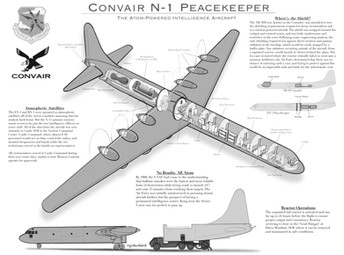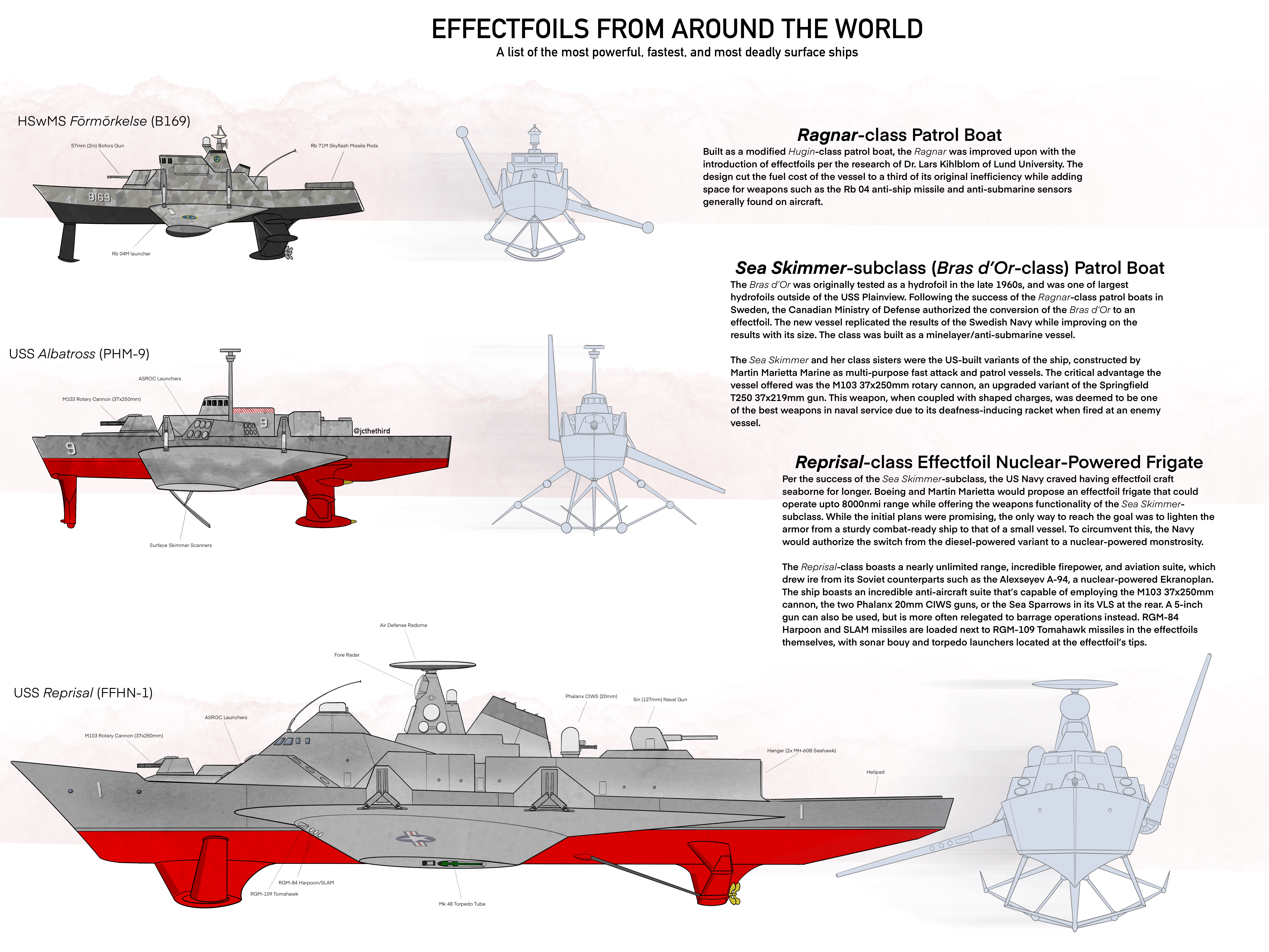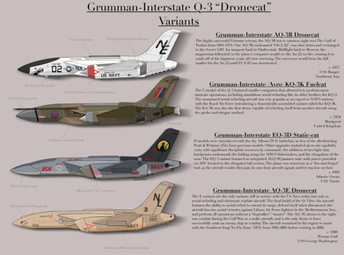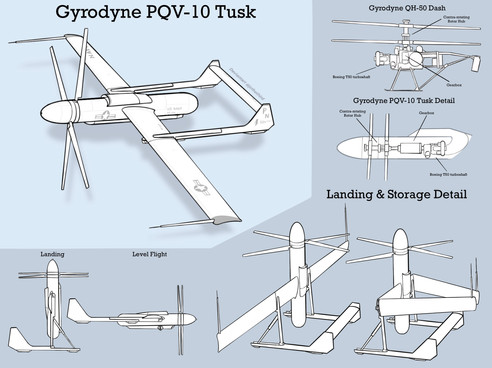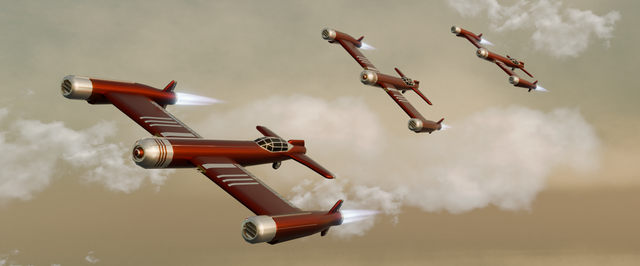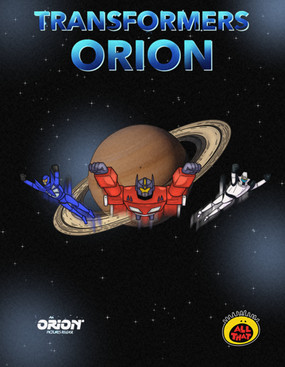HOME | DD
 jcthethird — C-130 Wagon-Fort Corral
jcthethird — C-130 Wagon-Fort Corral
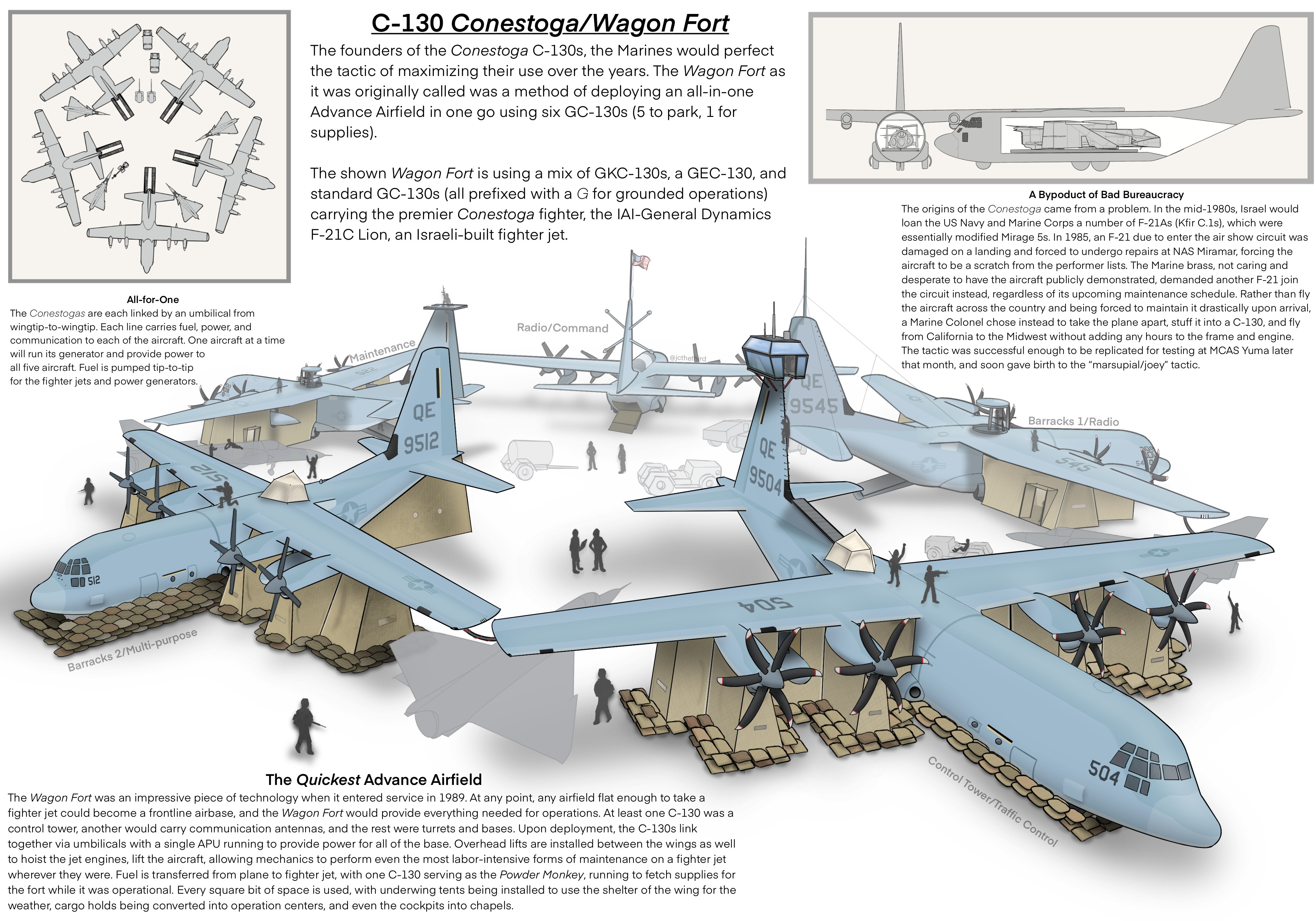
#airbase #aircraft #airforce #airplane #artillery #c130 #coldwar #conestoga #defense #flying #hangar #lockheed #marines #plane #usaf #kfir #air_force #cold_war #aircraftairplane #missile_launcher #general_dynamics #aircraftconcept #anti_aircraft #aircraftdesign #us_air_force #surface_to_air_missile #early_warning #advancedairbase #camping
Published: 2022-09-19 15:43:43 +0000 UTC; Views: 11734; Favourites: 208; Downloads: 45
Redirect to original
Description
The Corral (Tactic) is a type of Flying Camp where multiple aircraft are linked together in a "Wagon Fort" manner, which allows for a temporary encampment that is operational as an Advance Airfield. Primarily used for servicing and maintaining fighter aircraft, these military installations are often deployed to rural airports where the ground forces have secured a sizeable control of the area and the aircraft can operate safely from the range.
Origins and Development
The Flying Camp and Structure Tactic had been employed for a number of years, with the US Air Force being the primary employer of the tactic for their deployable systems in the field, such as surface-to-air missile batteries in the Arctic Circle and control towers at generally untowered fields around the world. These aircraft routinely operated alone except in special cases such as the Martin GKB-26 Radar Picket where multiple aircraft were needed to perform a single task.
In 1985 the United States Navy and Marine Corps took delivery of 25 IAI Kfir C.1 as a lease for OPFOR testing. Following the establishment of VMFT-401, the Marine unit that received 13 of the aircraft in 1987, Lt. Col Alexander Coleman of MAG-46 was given a list of orders for the aircraft, including a number of airshow appearances that the planes were needed to fly during. As a result of scheduling conflicts mainly tied to maintenance procedures, the F-21A Lions were not going to have any availability if the aircraft were going to fly from their base in Yuma to the airshows in the Midwest. Coleman needed to figure out how to make it work, but the maintenance requirements would require that the aircraft would be grounded prior to a transition from an airshow in Oshkosh, Wisconsin to one in Chicago.
While analyzing the aircraft, Coleman figured out a solution, but it would take a large amount of safety analysis and support if it were even feasible. Coleman determined that the F-21A could be relatively easily disassembled and palleted for potential deployment, utilizing modified motor pool equipment usually used for vehicle maintenance. By doing this, the aircraft could be disassembled and reassembled in Wisconsin without adding time to the airframe and engine, thus avoiding maintenance times required before flying to Gary for the Chicago airshow.
Following a preliminary analysis by his team, it was determined that the procedure was possible and could be done with some very simple assembly and disassembly equipment. In July of 1987, Coleman tested the tactic by disassembling a single F-21A and transporting it to Pensacola, Florida from Yuma, where the reassembly took place, but no flight followed. The fighter jet was disassembled again before being flown back to Yuma for the same procedure, only this time, the aircraft was powered on and flown following extensive safety analysis. Over the next few weeks, the procedure was streamlined and perfected, with the F-21 being able to go from C-130 landing to F-21 takeoff in 2 hours pending a series of electrical tests.
When the airshow circuit finally hit, a pair of F-21s were "slabbed" and sent via C-130s to Oshkosh. There, the aircraft were reassembled using a set of forklifts underneath the C-130 wings, and a test flight was conducted before a single F-21 performed for the show the next morning and the week after. Following the show, the F-21s were packed up and flown to Gary for the next show, where the other unit would perform.
News of the operation quickly circulated around the Pentagon, with the Marines showing interest in developing the project even further. Coleman would be placed in charge of testing and alignment of the program, eventually developing the first iteration, the Kangaroo.
The USMC Kangaroo program was started in late 1988, with the Marine Corps organizing the project to carry an undesignated fighter to replace the F-21. Testing continued with the F-21, but would soon expand to include the A-4 Skyhawk for testing purposes. Aircraft were perfected for testing, utilizing specialized General Dynamics buses for quick attachment of fuel lines, power cables, and other setups, as well as perfecting the disassembly. By February 1989, it was clear that the replacement fighter would not be ready for at least 5 years, which the Navy and Marines deemed unacceptable for their desired readiness in 2 years. As a result, General Dynamics was contracted to modify a number of F-21s as the F-21C, an aircraft designed for modular storage and transportation.
2 near-retirement C-130s were converted to NGC-130 units, which had permanently attached crane lifts under their wingtips and eyelets for dispensing tarps over the area underneath their wings.
KangarooThe first tests of the program was called the Kangaroo Method. The newly modified NGC-130s and 3 unmodified C-130s were dispatched and would tie-off nearly tip-to-tip upon parking, creating a tightly packed, straight line of the transports. The fighters (two F-21As and two YF-21Cs) were then removed and assembled underneath the joined wings, with just enough space for the fighter jet's tail to slide between the wings of the NGC-130. The C-130s would then rely on gravity to pump fuel into the fighter aircraft while personnel below would arm them with the selected munitions. Lt. Col Coleman would orchestrate the testing, which was conducted at various USAF, US Navy, and USMC bases around the American Southwest. Only one maintenance "hangars" was built between the two NC-130 aircraft, while the remaining 3 C-130s served as weapons and fueling "hangars".
Testing showed promise, with the new YF-21Cs being able to launch in under 45 minutes when properly configured and the F-21As in just shy of 1.5 hours. The majority of concerns with the Kangaroo method was the strangeness of using the straight line of aircraft, which could open the Marines to attacks and flanks if not properly secured. In the midst of testing, Coleman and his engineers would determine that there was a better approach.
Corral/Herc-FortWith the 4 F-21 fighters and the 5 C-130s, Coleman and his team would test a new method of "marsupial flying". The C-130s would point their tails inward in a pentagon formation while on the ground, creating a central common area where equipment could be shared. By doing so this way, the aircraft would "corral" or "wagon-fort" the units, and enabled a full-circle of shared utilities such as fuel and electricity, while also keeping equipment that was shared between the fighter jets such as tractor tugs, munitions carts, tools, and so on in the center of the circle from which they could be dispensed as needed without having to travel from one end of a Kangaroo Line all the way to the other.
Tarps were draped between the wings and tails of the C-130s, allowing all 5 aircraft to house a fighter below them or, in the case of the unused hangar, a Humvee or road vehicle. Fuel and power umbilicals were strung between the NGC-130s, and each aircraft's APU (now a full-sized generator) was specially clocked to power the majority of equipment in the holds so that a single generator was needed for all 5 C-130s at a time. With a proof-of-concept complete, the Marines approved the remaining three C-130s to convert to NC-130, now dubbed the GC-130 Connestoga, and the addition of 2 replacement YF-21Cs for the unconverted A-types.
The first functional "Corral" was run at MCAS Yuma in mid-1989, where the F-21C (now commissioned) was deployed with the 5 test MC-130 aircraft. An additional 2 full-corrals were built by the beginning of the Persian Gulf Conflict.
Operational HistoryThere were three full units of Marsupial and Joey aircraft ready by the time of the First Gulf War. In a very short period of time, the first Corral base appeared in Tel Aviv in January 1990, when the USMC would deploy them for Operation Palace Wall.
Gulf WarOperation Palace Wall was the US Operations coordinated out of Israel prior and during Operation Desert Storm. The inital Bivouac squadron, VMC-244 (Composite Squadron), was deployed to Tel Aviv at the Northeastern Tarmac. The F-21 fighter aircraft would be utilized to intercept and divert Iraqi aircraft over the next few days, and strongly discouraged the Iraqis from engaging what they would have assumed were Israeli Kfir fighter jets. Upon the exchange of hostilities, the F-21s managed to claim 4 Iraqi aircraft over Northern Iraq and launched multiple airstrikes on Iraqi Army positions in Kurdistan.
Eastern European WarAs part of Operation Deliberate Force and Operation Allied Force (or Operation Noble Anvil for the US), VMCs -133 and 142 were deployed to Aviano AFB and San Vito respectively, wherein they deployed the Corral for immediate response to the Yugoslavian, Srpska, and Serbian armed forces. A single aerial victory was attributed to the F-21s of VMC-142 when an F-21 downed a Soko G-2 Galeb of the Yugoslavian Air Force, but the aircraft were also heavily relied upon for Operation Red Psycho and the invasion of Neum. During the engagement, a single F-21 was lost when the wing would suddenly collapse during a turn South of Dubrovnik, attributed later to fatigue rather than assembly concerns, but the lighter weight build of the F-21 was determined to be a contributing factor.
Pacific Guardian See Chinese Invasion of Palau (2008) for details.
In order of aircraft development
Marsupial Transport- Lockheed GC-130 "Conestoga"
- Lockheed Martin NGC-130 "Conestoga-Fort"
- Lockheed Martin NGC-5 (one flown, remaining 4 for testing)
- Ilyushin Il-76 (Two converted and tested)
- Shaanxi Y-8
- Shaanxi Y-9
- General Dynamics F-21C "Lion"
- McDonnell Douglas A-4 "Skyhawk"
- McDonnell Douglas A-4O "Skyhawk II"
- Lockheed Martin A-4R "Skyhawk III"
- Northrop Grumman F-24 "Tigerhawk"
- Rockwell F-13 "Ranger"
- Boeing F-32 Goblin II
- Beechcraft AT-6 Texan II
- Mikoyan MiG-23 (4 built for testing)
- Chengdu J-7T
- Guizhou J-14T
- Lockheed F-104T "Starfighter"
- Aeritalia F-104S modifed for Joey use
- Cancelled in favor of the F-21
- Northrop T-38/F-5
- Original plan for the Joey fighter program
- Cancelled due to complexity with the wings and age of the aircraft
- Mikoyan LTS
- Original plan for the Russian Marsupial Program (NATO:RMP)
- Cancelled following budget cuts in 2008
- Marsupial
- A converted aircraft (generally MC-130 Conestoga) capable of carrying a smaller aircraft ready for deployment ("Joey")
- Joey
- A modified aircraft capable of being transported in the cargo bay of a marsupial
- Kangaroo-Line/Kanga-line
- A line of "Marsupial" aircraft, wingtip-to-wingtip, with "hangars" under each wing pair (total of 4 hangars). Less popular than the "Corral"
- Corral
- A group of "Marsupial" aircraft, tail-to-tail and wingtip-to-wingtip, with hangars under each wing pair (total of 5 hangars). More secure and safe than a "Kangaroo-Line".
- Wagon-Fort
- A "Corral", but the employed "marsupial" aircraft are permanent, cannibalized and repurposed to build a structure in place.
- Big Top
- A "Corral" that employs a large circus-like tent at the center to replace the tarping. Used in longer-term deployments.
- Tasmanian Tiger/Tigger
- A modified cruise missile drone designed to be carried by a "marsupial", take off like a drone, then attack a target on short notice.
Related content
Comments: 18

👍: 3 ⏩: 1

👍: 2 ⏩: 0

👍: 2 ⏩: 1

👍: 0 ⏩: 1

👍: 1 ⏩: 0

👍: 1 ⏩: 1

👍: 0 ⏩: 0

👍: 1 ⏩: 1

👍: 1 ⏩: 0

👍: 2 ⏩: 1

👍: 1 ⏩: 0

👍: 1 ⏩: 1

👍: 2 ⏩: 1

👍: 1 ⏩: 0

👍: 1 ⏩: 1

👍: 0 ⏩: 1

👍: 1 ⏩: 1

👍: 0 ⏩: 0
